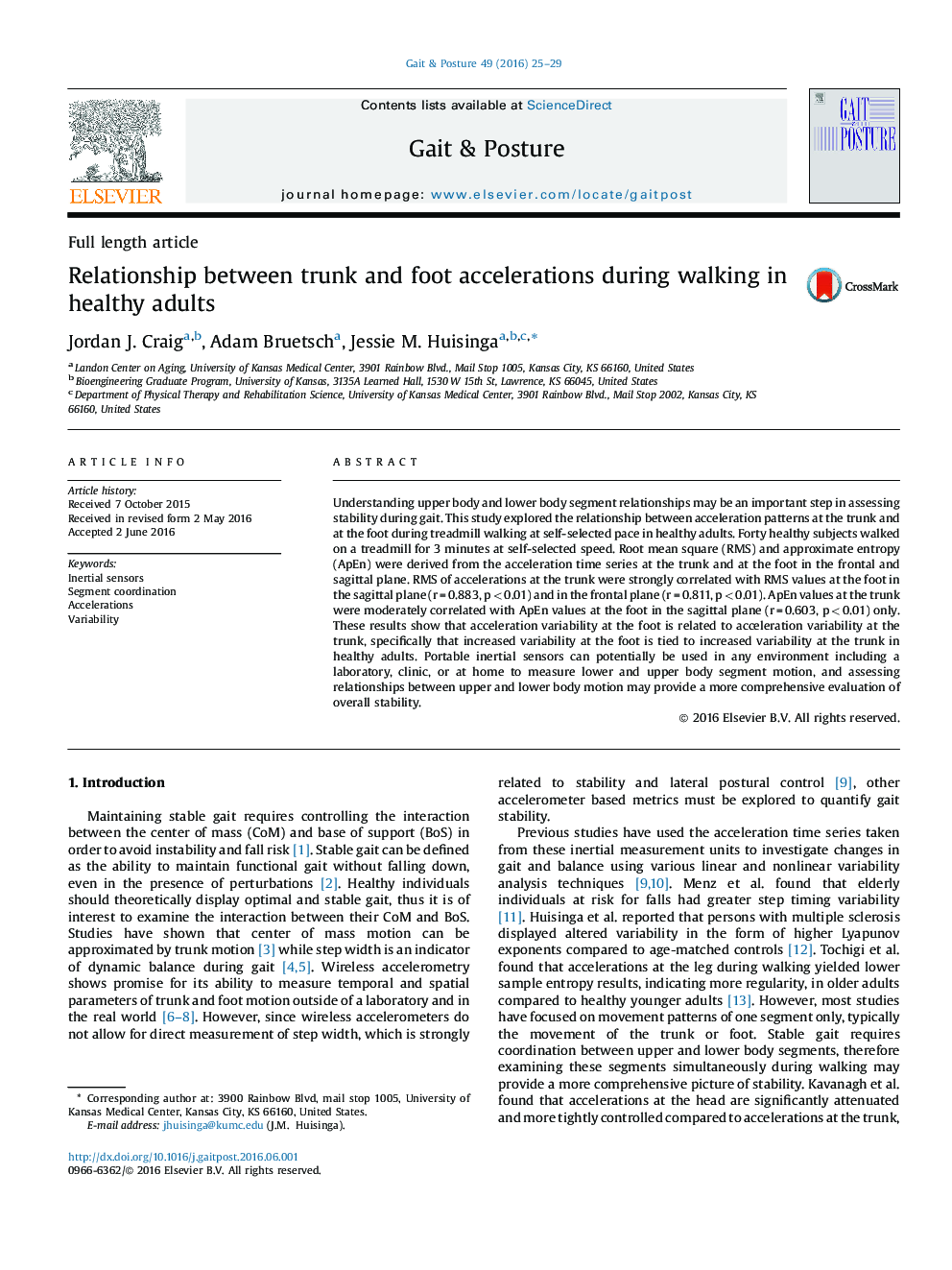| Article ID | Journal | Published Year | Pages | File Type |
|---|---|---|---|---|
| 6205381 | Gait & Posture | 2016 | 5 Pages |
â¢Acceleration variability magnitude at feet is greater than at trunk during walking.â¢Structure of variability shows greater regularity at the foot than at the trunk.â¢Foot and trunk acceleration variability correlated in frontal and sagittal planes.
Understanding upper body and lower body segment relationships may be an important step in assessing stability during gait. This study explored the relationship between acceleration patterns at the trunk and at the foot during treadmill walking at self-selected pace in healthy adults. Forty healthy subjects walked on a treadmill for 3 minutes at self-selected speed. Root mean square (RMS) and approximate entropy (ApEn) were derived from the acceleration time series at the trunk and at the foot in the frontal and sagittal plane. RMS of accelerations at the trunk were strongly correlated with RMS values at the foot in the sagittal plane (r = 0.883, p < 0.01) and in the frontal plane (r = 0.811, p < 0.01). ApEn values at the trunk were moderately correlated with ApEn values at the foot in the sagittal plane (r = 0.603, p < 0.01) only. These results show that acceleration variability at the foot is related to acceleration variability at the trunk, specifically that increased variability at the foot is tied to increased variability at the trunk in healthy adults. Portable inertial sensors can potentially be used in any environment including a laboratory, clinic, or at home to measure lower and upper body segment motion, and assessing relationships between upper and lower body motion may provide a more comprehensive evaluation of overall stability.
